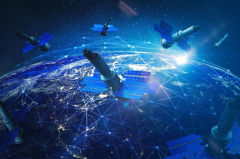Carlos M. Meléndez is Vice President of Operations of Maxar Intelligence, Puerto Rico, a world-leading geospatial intelligence firm.
Artificial intelligence (AI) will continue to reign supreme in predictions of what the new year may hold—from autonomous AI agents to multimodal AI and insights as a service. Yet, it’s easy to forget that AI isn’t the only show in town; other technological innovations are silently disrupting entire markets.
One of those innovations is the rise of satellite internet networks, which provide high-speed broadband internet access to remote locations globally. By enabling communication to essentially flow through space on their path to particular destinations, in 2025, we can expect the traditional models of communication delivery, from cable networks and cellular networks, to be drastically altered.
Despite the seemingly vast difference between AI predictions and satellite internet networks, one common thread unites them—their ability to improve life on Earth. AI advances, especially those that enable deeper insights from geospatial data, are helping to improve the environment. They’re also helping to build smarter cities, keep communities safe from danger and enable better mapping navigation for individuals.
Advances in satellite internet networks are increasingly bringing vital communication services to those in remote locations, giving them a lifeline to emergency support when it’s needed, access to news programming and the ability to conduct work remotely over the internet.
Based on my experience in the industry, the following are four of my predictions about the ways that technological innovations may reshape the world for the better in 2025.
Communication Will Start Flowing Through Space
We’ve all seen those bright lights in the sky and the many social media concerns about what they could be. We know now that they are SpaceX-owned Starlink satellites, and in 2025, we’ll continue to see more satellite internet networks—from SpaceX, Amazon and its Project Kuiper and other international firms entering the satellite broadband space.
Satellite internet networks will disrupt the telecommunications industry and enable new channels of communication, challenging traditional cellular service and cable networks to provide broadband access to vast and remote areas, ships at sea and other locations that have been sorely lacking in internet access.
AI Agents Will Operate Autonomously
Chatbots and natural language processing tools have been assisting humans for several years now. In 2025, we will see the rise of AI agents, not simply working alongside humans but working autonomously. In fact, Deloitte predicts that 25% of enterprises using generative AI (GenAI) are expected to deploy AI agents in 2025, and that figure will increase to 50% in 2027.
Currently, AI agents are performing simple tasks, but in 2025, they may be relied upon to perform more complex, autonomous tasks. AI agents will be able to better understand geospatial data in the form of satellite imagery gathered from specific areas of Earth and not only identify what you are looking at. Based on the data, they may also be able to understand at what time of day it was captured and if the traffic depicted in the image is normal for that time of day. This is the future of geospatial AI—AI agents operating autonomously to provide deeper insights into what data is trying to tell us.
Multimodal AI Will Enhance Analytics-As-A-Service
Analytics-as-a-service has emerged as a strategic business enabler, enabling organizations to receive actionable insights based on interpreted data. In 2025, as the data deluge may become too much for organizations t





